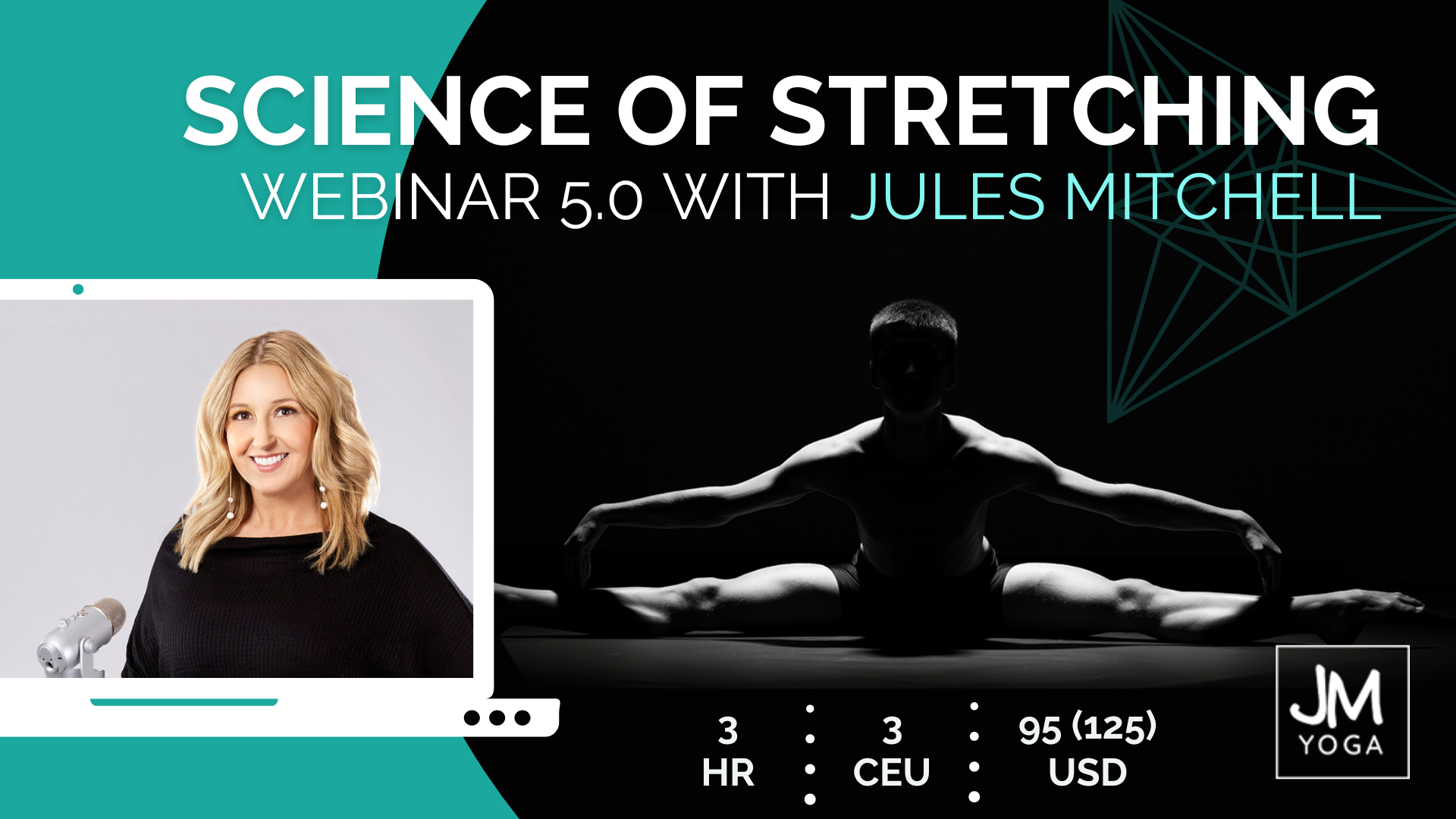Collagen is highly stable. It can be stressed to great degrees, for long periods of time, and yet return to its resting tension.
It really makes you wonder what overstretching in a yoga class actually means.
What exactly are the parameters? How hard must you stretch, how long, how often, etc.?
What is the final outcome? Increased range of motion, reduced speed, more compliant tissues, less elasticity, increased pain, etc.?
How are these measured? In yoga poses, in a timed sprint, ultrasound, using a pain VAS?
If you spend as much time reading the stretching research as I have, you will see that a lot of what we believe about stretching in yoga isn’t actually supported, and is often not well studied.
You’ll also start to recognize contradictions in the way yoga teachers talk about stretching.
Like how certain gentle yoga stretches (yin yoga, e.g.) strengthen connective tissue but you also need to be careful because stretching loosens connective tissue. Literally in the same sentence.
After taking my course, yoga teachers email me all the time trying to make sense of what they hear. For example, one studio owner received an email from a woman 20 weeks pregnant who wanted to take their yin yoga class. When the studio owner asked the yin teacher what she thought, she said it’s not recommended after 3 months of pregnancy because pregnancy loosens up the connective tissue to prepare for the baby. This left the studio owner very confused. If stretching actually loosened connective tissue and you want loose connective tissue, then why is it not recommended? Or is it because stretching tightens the connective tissue and you don’t want tight tissues for birth? Or is it that stretching strengthens connective tissue and strong tissues aren’t recommended for childbirth? Are you following my line of questioning?
Most often, however, yoga teachers tend to take one side definitely and that’s it. Like the yoga and bone (also collagen, I might add) density conversation. People read the same research and walk away with their own (opposing) beliefs supported, appalled at how the other side can get it so wrong. I guess it’s better than talking out of both sides of their mouths?
This is why your yoga education is about more than citing studies.
It’s about learning to think about those studies. It’s not always comfortable and it’s never quick and easy.
If you want help reading and interpreting research, consider joining my yoga teacher mentoring program. I’m here to help.
Extend Your Learning:
Online Education With Jules

The Science of Stretching Webinar 5.0
This webinar is for teachers and students who have an insatiable curiosity about stretching, what it does, and how it works, while accepting that conventional stretching wisdom isn’t always accurate. Eligible for 3 CEUs. This course is offered in January and July each year. Learn more >
